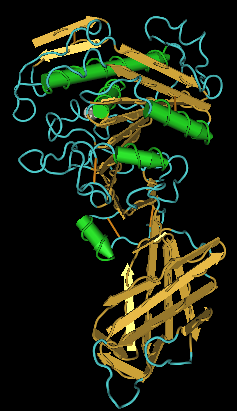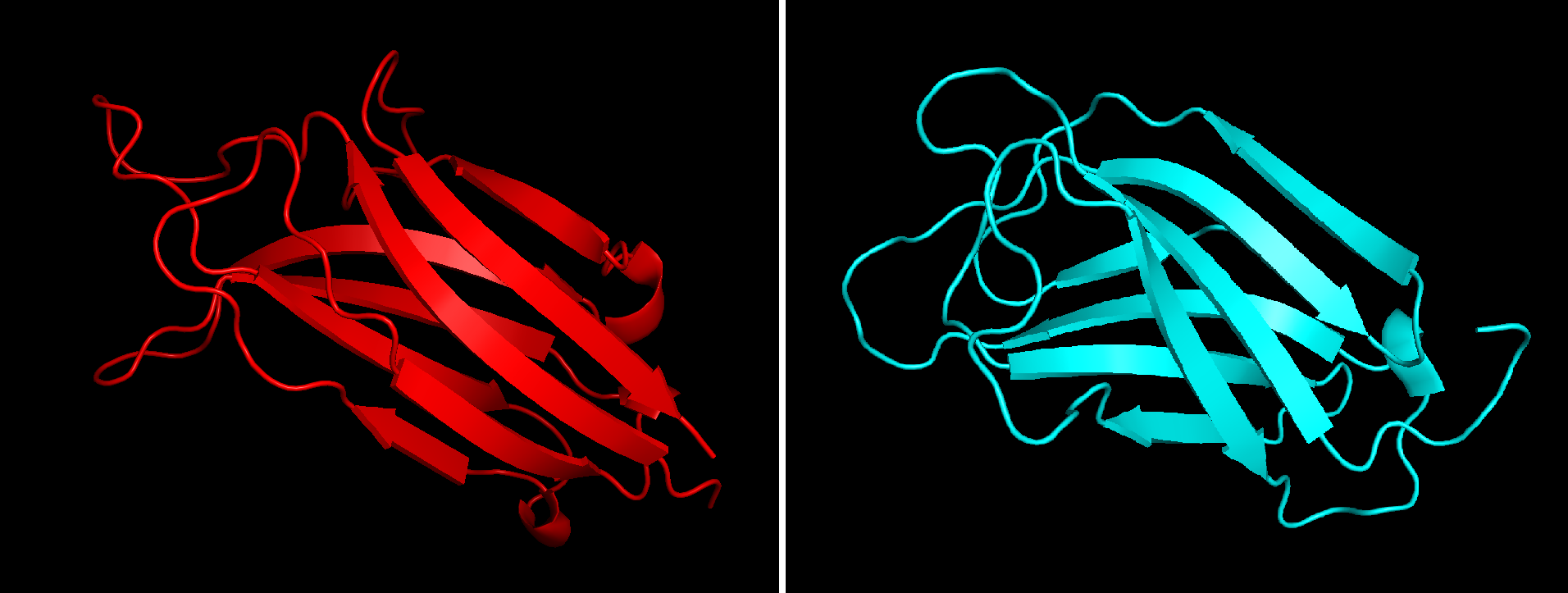|
15-hydroxyicosatetraenoic Acid
15-Hydroxyeicosatetraenoic acid (also termed 15-HETE, 15(''S'')-HETE, and 15''S''-HETE) is an eicosanoid, i.e. a metabolite of arachidonic acid. Various cell types metabolize arachidonic acid to 15(''S'')-hydroperoxyeicosatetraenoic acid (15(''S'')-HpETE). This initial Peroxide, hydroperoxide product is extremely short-lived in cells: if not otherwise metabolized, it is rapidly reduced to 15(''S'')-HETE. Both of these metabolites, depending on the cell type which forms them, can be further metabolized to 15-oxo-eicosatetraenoic acid (15-oxo-ETE), 5(''S''),15(''S'')-dihydroxy-eicosatetraenoic acid (5(''S''),15(''S'')-diHETE), 5-oxo-15(''S'')-hydroxyeicosatetraenoic acid (5-oxo-15(''S'')-HETE), a subset of specialized pro-resolving mediators viz., the lipoxins, a class of pro-inflammatory mediators, the eoxins, and other products that have less well-defined activities and functions. Thus, 15(''S'')-HETE and 15(''S'')-HpETE, in addition to having intrinsic biological activities, are ke ... [...More Info...] [...Related Items...] OR: [Wikipedia] [Google] [Baidu] |
Eicosanoid
Eicosanoids are lipid signaling, signaling molecules made by the enzymatic or non-enzymatic oxidation of arachidonic acid or other polyunsaturated fatty acids (PUFAs) that are, similar to arachidonic acid, around 20 carbon units in length. Eicosanoids are a sub-category of oxylipins, i.e. oxidized fatty acids of diverse carbon units in length, and are distinguished from other oxylipins by their overwhelming importance as cell signaling molecules. Eicosanoids function in diverse physiological systems and pathological processes such as: mounting or inhibiting inflammation, allergy, fever and other immune responses; regulating the abortion of pregnancy and normal childbirth; contributing to the perception of pain; regulating cell growth; controlling blood pressure; and modulating the regional flow of blood to tissues. In performing these roles, eicosanoids most often act as autocrine signaling agents to impact their cells of origin or as paracrine signaling agents to impact cells in t ... [...More Info...] [...Related Items...] OR: [Wikipedia] [Google] [Baidu] |
Chirality (chemistry)
In chemistry, a molecule or ion is called chiral () if it cannot be superposed on its mirror image by any combination of rotation (geometry), rotations, translation (geometry), translations, and some Conformational isomerism, conformational changes. This geometric property is called chirality (). The terms are derived from Ancient Greek (''cheir'') 'hand'; which is the canonical example of an object with this property. A chiral molecule or ion exists in two stereoisomers that are mirror images of each other, called enantiomers; they are often distinguished as either "right-handed" or "left-handed" by their absolute configuration or some other criterion. The two enantiomers have the same chemical properties, except when reacting with other chiral compounds. They also have the same physics, physical properties, except that they often have opposite optical activity, optical activities. A homogeneous mixture of the two enantiomers in equal parts is said to be racemic mixture, racem ... [...More Info...] [...Related Items...] OR: [Wikipedia] [Google] [Baidu] |
9-Hydroxyoctadecadienoic Acid
9-Hydroxyoctadecadienoic acid (or 9-HODE) has been used in the literature to designate either or both of two stereoisomer metabolites of the essential fatty acid, linoleic acid: 9(''S'')-hydroxy-10(''E''),12(''Z'')-octadecadienoic acid (9(''S'')-HODE) and 9(''R'')-hydroxy-10(''E''),12(''Z'')-octadecadienoic acid (9(''R'')-HODE); these two metabolites differ in having their hydroxy residues in the ''S'' or ''R'' configurations, respectively. The accompanying figure gives the structure for 9(''S'')-HETE. Two other 9-hydroxy linoleic acid derivatives occur in nature, the 10''E'',12''E'' isomers of 9(''S'')-HODE and 9''(R'')-HODE viz., 9(''S'')-hydroxy-10''E'',12''E''-octadecadienoic acid (9(''S'')-''EE''-HODE) and 9(''R'')-hydroxy-10''E'',12''E''-octadecadienoic acid (13(''R'')-''EE''-HODE); these two derivatives have their double bond at carbon 12 in the ''E'' or trans configuration as opposed to the ''Z'' or cis configuration. The four 9-HODE isomers, particularly under condit ... [...More Info...] [...Related Items...] OR: [Wikipedia] [Google] [Baidu] |
13-Hydroxyoctadecadienoic Acid
13-Hydroxyoctadecadienoic acid (13-HODE) is the commonly used term for 13(''S'')-hydroxy-9''Z'',11''E''-octadecadienoic acid (13(''S'')-HODE). The production of 13(''S'')-HODE is often accompanied by the production of its stereoisomer, 13(''R'')-hydroxy-9''Z'',11''E''-octadecadienoic acid (13(''R'')-HODE). The adjacent figure gives the structure for the (''S'') stereoisomer of 13-HODE. Two other naturally occurring 13-HODEs that may accompany the production of 13(''S'')-HODE are its cis-trans (i.e., 9''E'',11''E'') isomers viz., 13(''S'')-hydroxy-9''E'',11''E''-octadecadienoic acid (13(''S'')-''EE''-HODE) and 13(''R'')-hydroxy-9''E'',11''E''-octadecadienoic acid (13(''R'')-''EE''-HODE). Studies credit 13(''S'')-HODE with a range of clinically relevant bioactivities; recent studies have assigned activities to 13(''R'')-HODE that differ from those of 13(''S'')-HODE; and other studies have proposed that one or more of these HODEs mediate physiological and pathological responses, a ... [...More Info...] [...Related Items...] OR: [Wikipedia] [Google] [Baidu] |
Linoleic Acid
Linoleic acid (LA) is an organic compound with the formula . Both alkene groups () are ''cis''. It is a fatty acid sometimes denoted 18:2 (n−6) or 18:2 ''cis''-9,12. A linoleate is a salt or ester of this acid. Linoleic acid is a polyunsaturated, omega−6 fatty acid. It is a colorless liquid that is virtually insoluble in water but soluble in many organic solvents. It typically occurs in nature as a triglyceride (ester of glycerin) rather than as a free fatty acid. It is one of two essential fatty acids for humans, who must obtain it through their diet, and the most essential, because the body uses it as a base to make the others. The word "linoleic" derives , reflecting the fact that it was first isolated from linseed oil. History In 1844, F. Sacc, working at the laboratory of Justus von Liebig Justus ''Freiherr'' von Liebig (12 May 1803 – 18 April 1873) was a Germans, German scientist who made major contributions to the theory, practice, and pedagogy of che ... [...More Info...] [...Related Items...] OR: [Wikipedia] [Google] [Baidu] |
ALOX15B
Arachidonate 15-lipoxygenase type II is an enzyme that in humans is encoded by the ''ALOX15B'' gene. ALOX15B, also known as 15-lipoxygenase-2 (15-LO-2 or 15-LOX-2), is distinguished from its related oxygenase, ALOX15 or 15-lipoxygenase-1. Function This gene encodes a member of the lipoxygenase family of structurally related nonheme iron dioxygenases involved in the production of fatty acid hydroperoxides. 15-LOX-2 has 38-39% amino acid sequence identity to human 15-LOX-1 and 12-lipoxygenase and 44% amino acid sequence identity to human 5-lipoxygenase. 15-LOX-2 converts arachidonic acid almost exclusively to the ''S'' stereoisomer of 15-Hydroperoxyicosatetraenoic acid which is commonly reduced to the ''S'' stereoisomer 15-Hydroxyeicosatetraenoic acid by ubiquitous cellular peroxidases; it metabolizes linoleic acid less effectively, converting this fatty acid to the ''S'' stereoisomer of 13-hydroperoxyoctadecadienoic acid which is likewise rapidly reduced to the ''S'' stereoisom ... [...More Info...] [...Related Items...] OR: [Wikipedia] [Google] [Baidu] |
12-Hydroxyeicosatetraenoic Acid
12-Hydroxyeicosatetraenoic acid (12-HETE) is a derivative of the 20 carbon polyunsaturated fatty acid, arachidonic acid, containing a hydroxyl residue at carbon 12 and a 5''Z'',''8Z'',10''E'',14''Z'' cis–trans configuration (Z=cis, E=trans) in its four double bonds. It was first found as a product of arachidonic acid metabolism made by human and bovine platelets through their 12''S''-lipoxygenase (i.e. ALOX12) enzyme(s). However, the term 12-HETE is ambiguous in that it has been used to indicate not only the initially detected "S" stereoisomer, 12''S''-hydroxy-5''Z'',''8Z'',10''E'',14''Z''-eicosatetraenoic acid (12(''S'')-HETE or 12''S''-HETE), made by platelets, but also the later detected "R" stereoisomer, 12(''R'')-hydroxy-5''Z'',''8Z'',10''E'',14''Z''-eicosatetraenoic acid (also termed 12(''R'')-HETE or 12''R''-HETE) made by other tissues through their 12''R''-lipoxygenase enzyme, ALOX12B. The two isomers, either directly or after being further metabolized, have been sugge ... [...More Info...] [...Related Items...] OR: [Wikipedia] [Google] [Baidu] |
ALOX15
ALOX15 (also termed arachidonate 15-lipoxygenase, 15-lipoxygenase-1, 15-LO-1, 15-LOX-1) is, like other lipoxygenases, a seminal enzyme in the metabolism of polyunsaturated fatty acids to a wide range of physiologically and pathologically important products. ▼ Gene Function Kelavkar and Badr (1999) stated that the ALOX15 gene product is implicated in antiinflammation, membrane remodeling, and cancer development/metastasis. Kelavkar and Badr (1999) described experiments yielding data that supported the hypothesis that loss of the TP53 gene, or gain-of-function activities resulting from the expression of its mutant forms, regulates ALOX15 promoter activity in human and in mouse, albeit in directionally opposite manners. These studies defined a direct link between ALOX15 gene activity and an established tumor-suppressor gene located in close chromosomal proximity. Kelavkar and Badr (1999) referred to this as evidence that 15-lipoxygenase is a mutator gene. ▼ Mapping By PCR ana ... [...More Info...] [...Related Items...] OR: [Wikipedia] [Google] [Baidu] |
Lipase
In biochemistry, lipase ( ) refers to a class of enzymes that catalyzes the hydrolysis of fats. Some lipases display broad substrate scope including esters of cholesterol, phospholipids, and of lipid-soluble vitamins and sphingomyelinases; however, these are usually treated separately from "conventional" lipases. Unlike esterases, which function in water, lipases "are activated only when adsorbed to an oil–water interface". Lipases perform essential roles in digestion, transport and processing of dietary lipids in most, if not all, organisms. Structure and catalytic mechanism Classically, lipases catalyse the hydrolysis of triglycerides: \begin \text + \ce &\longrightarrow \text + \text \\[4pt] \text + \ce &\longrightarrow \text + \text \\[4pt] \text + \ce &\longrightarrow \text + \text \end Lipases are serine hydrolases, i.e. they function by transesterification generating an acyl serine intermediate. Most lipases act at a specific position on the glycerol ... [...More Info...] [...Related Items...] OR: [Wikipedia] [Google] [Baidu] |
Phospholipase C
Phospholipase C (PLC) is a class of membrane-associated enzymes that cleave phospholipids just before the phosphate group (see figure). It is most commonly taken to be synonymous with the human forms of this enzyme, which play an important role in eukaryotic cell physiology, in particular signal transduction pathways. Phospholipase C's role in signal transduction is its cleavage of phosphatidylinositol 4,5-bisphosphate (PIP2) into diacyl glycerol (DAG) and inositol 1,4,5-trisphosphate (IP3), which serve as second messengers. Activators of each PLC vary, but typically include heterotrimeric G protein subunits, protein tyrosine kinases, small G proteins, Ca2+, and phospholipids. There are thirteen kinds of mammalian phospholipase C that are classified into six isotypes (β, γ, δ, ε, ζ, η) according to structure. Each PLC has unique and overlapping controls over expression and subcellular distribution. However, PLC is not limited to mammals, and is present in bacteria a ... [...More Info...] [...Related Items...] OR: [Wikipedia] [Google] [Baidu] |
Phospholipid
Phospholipids are a class of lipids whose molecule has a hydrophilic "head" containing a phosphate group and two hydrophobic "tails" derived from fatty acids, joined by an alcohol residue (usually a glycerol molecule). Marine phospholipids typically have omega-3 fatty acids EPA and DHA integrated as part of the phospholipid molecule. The phosphate group can be modified with simple organic molecules such as choline, ethanolamine or serine. Phospholipids are a key component of all cell membranes. They can form lipid bilayers because of their amphiphilic characteristic. In eukaryotes, cell membranes also contain another class of lipid, sterol, interspersed among the phospholipids. The combination provides fluidity in two dimensions combined with mechanical strength against rupture. Purified phospholipids are produced commercially and have found applications in nanotechnology and materials science. The first phospholipid identified in 1847 as such in biological tissues w ... [...More Info...] [...Related Items...] OR: [Wikipedia] [Google] [Baidu] |
Double Bond
In chemistry, a double bond is a covalent bond between two atoms involving four bonding electrons as opposed to two in a single bond. Double bonds occur most commonly between two carbon atoms, for example in alkenes. Many double bonds exist between two different elements: for example, in a carbonyl group between a carbon atom and an oxygen atom. Other common double bonds are found in azo compounds (N=N), imines (C=N), and sulfoxides (S=O). In a skeletal formula, a double bond is drawn as two parallel lines (=) between the two connected atoms; typographically, the equals sign is used for this. Double bonds were introduced in chemical notation by Russian chemist Alexander Butlerov. Double bonds involving carbon are stronger and shorter than single bonds. The bond order is two. Double bonds are also electron-rich, which makes them potentially more reactive in the presence of a strong electron acceptor (as in addition reactions of the halogens). File:Ethene structural.svg, ... [...More Info...] [...Related Items...] OR: [Wikipedia] [Google] [Baidu] |



